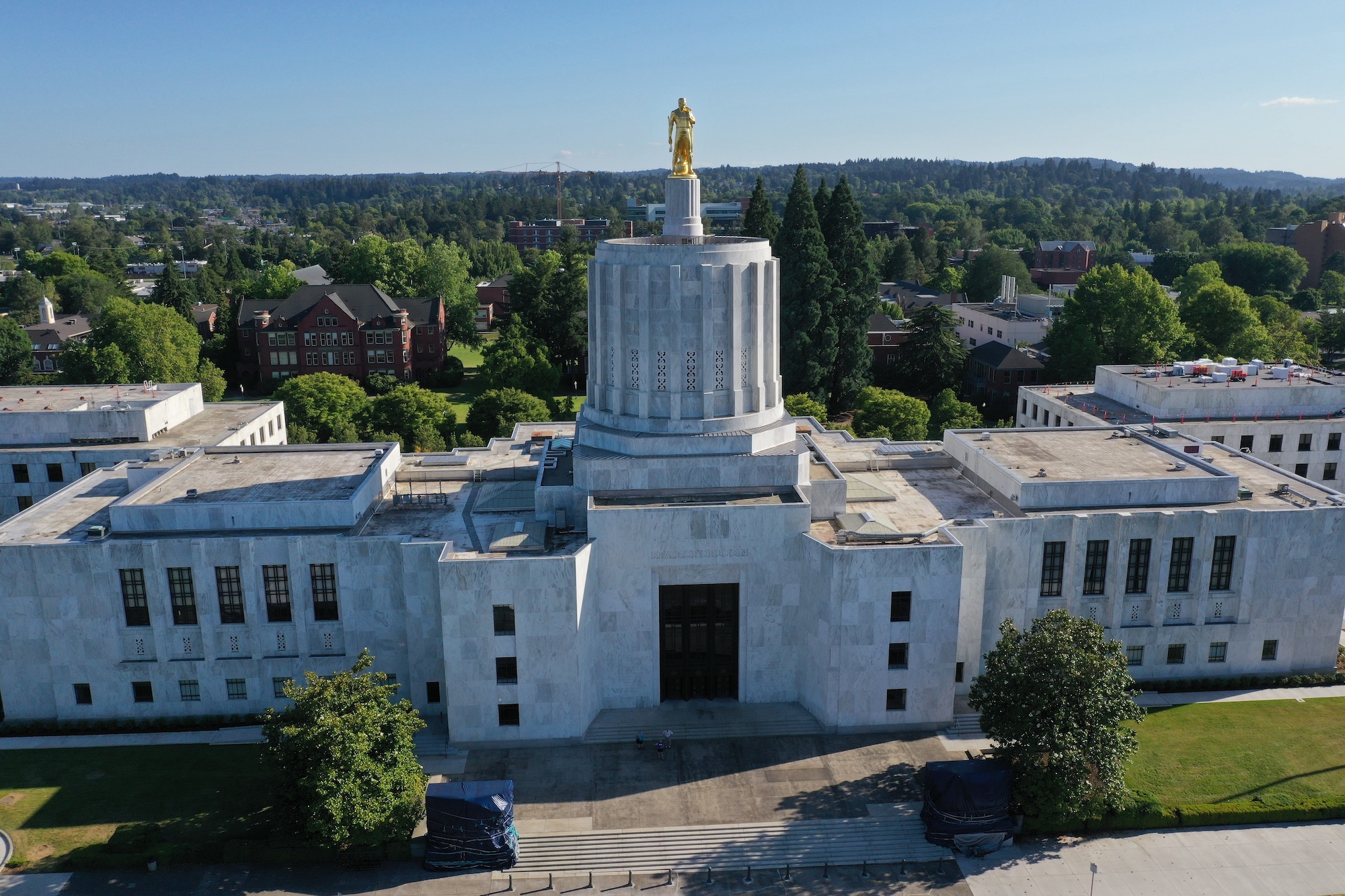Portland State held a Budget Town Hall on Feb. 22 to address what the future holds for its precarious finances—including PSU President Stephen Percy’s new strategy for approaching the budget going forward.
Among the challenges PSU is facing is a steady decline in new students and subsequent tuition dollars, exacerbated by the COVID-19 pandemic that’s slashing enrollment and revenue numbers.
“I’m committed to working for this process to be transparent and inclusive, I think it’s really fundamentally important,” Percy said. “I want to be able to have discussions with all of the faculty, staff and students. We need to be collaborative and our work, but it starts with a common understanding of our challenges and our opportunities. And this is one of many opportunities meant to ensure transparency.”
Percy named three new strategic priorities for the President’s office to strengthen PSU: centering the school’s effort to improve racial justice and equity to combat structural racism, focusing on student success to improve retention and graduation rates and engaging with the community to strengthen Portland as a whole.
PSU has struggled with losses of revenue. Enrollment numbers are falling, and by extension, PSU is losing potential tuition dollars. Fall enrollment decreased by 7.8% from the previous year, and currently the most significant losses are in first time students. However, according to Vice President of Enrollment Management Chuck Knepfle, PSU is still in the early cycle of transfer recruitment, but initial numbers are indicating a more significant decline in transfer students.
Overall, PSU is currently projecting a 4.8% enrollment decline for the 2020–21 year and a 6.8% decline specifically in first-time and transfer students.
Auxiliary services—which include housing, parking and athletics, among other departments—have suffered the hardest financial impact since the beginning of the pandemic, according to University Budget Director Andria Johnson. The forecasted revenue for auxiliary services for fiscal year 2021—fall 2020 to summer 2021—is currently $8 million lower than the adopted budget, but is being covered by reserves. However, expenses have also declined.
After explaining the state of the budget and its obstacles, the presentation moved to Percy’s plan to address them. Students will see the effects of his strategy next year, starting in fall 2021. Next year’s budget—including tuition prices—has yet to be set, but is likely to include rising tuition and budget cuts.
PSU is anticipating a 1.5% budget cut from the 2021 year, which could include 3–4% cuts for different units across campus, according to Percy. Those cuts could come with workforce reductions.
“Unfortunately, there may be a limited number of workforce reductions,” he said. “Some that will be handled through attrition and program changes as we try to work for a budget this next year that balances. We’ll be transparent in this work, and adhere strictly to the practices and procedures required for such changes.”
Percy didn’t give a number for tuition increases, but insisted they would be limited, while budget forecasts presented by Vice President of Finance & Administration Kevin Reynolds used a 2.5% increase.
PSU will also use one-time federal relief funds and advocate for state funding. To best make up for lost revenue at the same time as reimagining the budget, PSU is relying on its financial reserves.
“We want to use our reserves cautiously,” Percy said. “That allows us more time to provide a balanced and sustained approach to our budget work. They do allow us some time to avoid having to make major cuts immediately to find our way forward.”
This won’t be the first time PSU has relied on its reserves. From 2012–14, PSU used reserves to make up for the lost revenue after the recession, according to Reynolds. From there, PSU held expenses at nearly the same level for two years, to give revenue a chance to outgrow expenses again.
Between increased state support, increased number of non-resident students, and tuition increases, it did—despite 1–2% losses in student enrollment. Expenses could rise without rising above revenue again, until this year.
Even less is set in stone for years going forward, except that PSU will continue to rely on reserves while the budget is improved. Percy’s approach will also include new plans to increase enrollment, more advocacy for state and other external resources, finding new opportunities for revenue growth and reducing expenditures.
According to Percy, a more definite multi-year plan will be presented in a year, after multiple budget reviews begin and end around campus.
Two major processes will start in the Office of Academic Affairs (OAA) in particular: One to develop a budget model for OAA that, by extension, will review how resources are distributed across academic departments, and one to review PSU’s academic programs—and reductions.
OAA will host its own town hall events in the near future to address its budget. The first, on March 9, will address the budget in general, while the second, on March 11, will specifically focus on academic programs.
“In partnership with the Faculty Senate, I’ve set up a working group that is outlining metrics for how we may begin to consider possible program reductions,” Provost and Vice President for Academic Affairs Susan Jeffords said. “That is such a [big] conversation that I didn’t want to try to squeeze it into the first town hall, so we are going to have a town hall specifically looking at matter. It will be an opportunity for the working group to share their recommended metrics so that we can get feedback from all of you as we engage in this process.”
Finance & Administration will also lead reviews of support services at PSU, as well as PSU’s physical footprint—analyzing if PSU is using its spaces effectively and if leases can be reduced.
The town hall concluded with an hour long question and answer segment, with one asking if PSU should refrain from making years-long plans in the middle of a global pandemic. According to Percy, PSU can’t.
“Our fiscal situation is such that we cannot postpone those decisions,” Percy explained. “We cannot postpone those decisions with the declining enrollment, declining tuition revenue, and therefore tremendous fiscal pressure on the budget…we can’t wait on that.”
“Wouldn’t it be great if we weren’t in the pandemic, absolutely, but many of these issues are not pandemic-specific. The pandemic may have exacerbated for the longer-term financial issues and challenges to our campus.”
Another questioned why PSU’s new student enrollment was struggling, while other Oregon schools, University of Oregon and Oregon State University in particular, saw spikes in new student applications. Knepfle had two main theories, one being that an increasing number of selective colleges are eliminating their requirement for SAT and ACT scores, attracting new students who otherwise would write those schools off.
His second theory is because PSU is a school that makes itself more accessible and appealing for low-income students—during a global pandemic that has been especially difficult for low-income wage earners.
“These trends, as well as drop in admission applications for next year…are being seen across the country at schools like PSU, that serve predominantly low income and diverse students,” Knepfle said. “Our colleagues, it’s selective, wealthy institutions are seeing the opposite trend.”
The Budget Town Hall was the first step in a process that may take a long time, but hopefully will improve PSU for even longer. For next year, tuition prices will be proposed to the Board of Trustees in April, and the full budget will be finalized in June or July 2021 for state appropriations.




